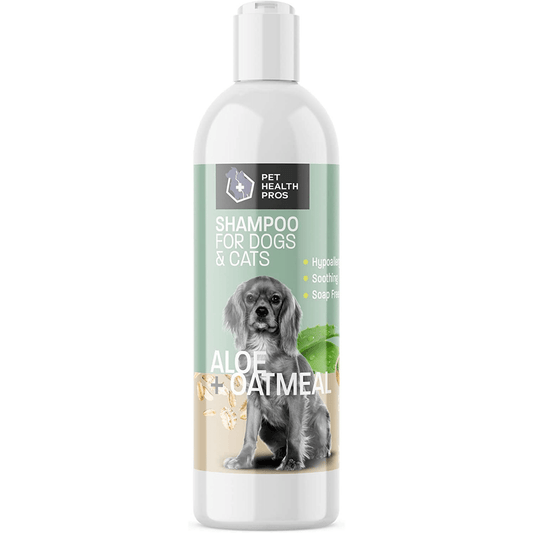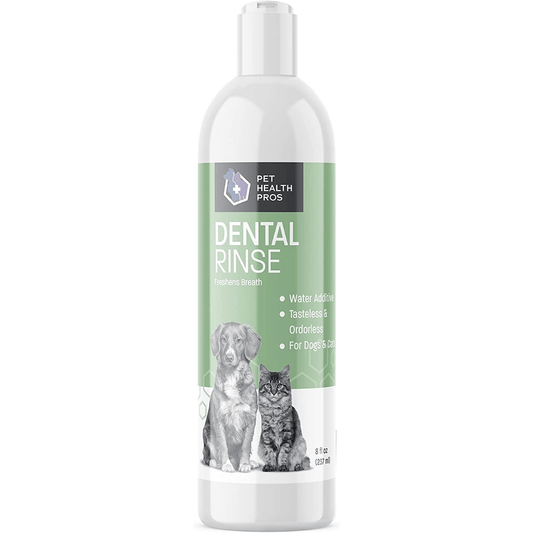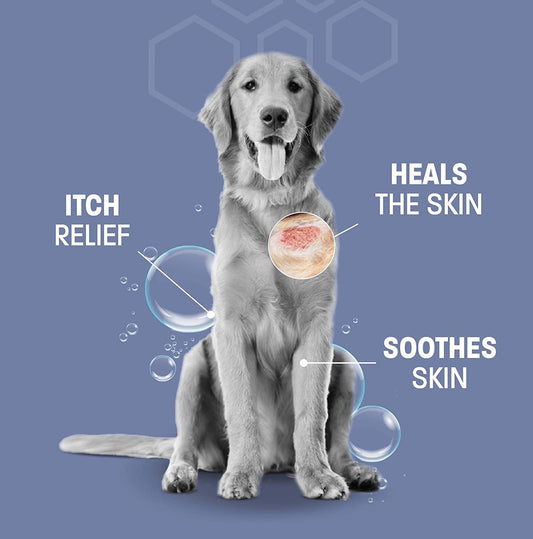Itchy ears can be a common problem for dogs and can cause discomfort and irritation. Understanding the causes and remedies for dog itchy ears is essential in providing relief for our furry friends. This article will explore the anatomy of a dog's ear, common causes of itchy ears, symptoms to look out for, diagnosing methods, and effective treatments. By gaining knowledge about this issue, dog owners can take proactive steps to prevent and alleviate their pet's discomfort.
Key Takeaways
- Allergies, ear infections, ear mites, and foreign objects are common causes of itchy ears in dogs.
- Symptoms of itchy ears include excessive scratching, head shaking, redness and swelling, and an unpleasant odor.
- Diagnosing itchy ears in dogs involves a physical examination, ear swab test, and skin allergy test.
- Treating itchy ears may include cleaning the ears, medication, dietary changes, and taking preventive measures to avoid recurrence.
Understanding the Anatomy of a Dog's Ear
The External Ear
The external ear, also known as the pinna or auricle, is the visible part of a dog's ear. It is made up of cartilage covered by skin and fur. The shape and size of the external ear can vary depending on the breed of the dog. For example, dogs with floppy ears have larger and more pendulous pinnae, while dogs with erect ears have smaller and more upright pinnae.
The primary function of the external ear is to collect and funnel sound waves into the ear canal. It also helps to protect the delicate structures of the middle and inner ear from damage. The external ear is rich in blood vessels and nerve endings, making it sensitive to touch and temperature changes.
To keep the external ear clean and healthy, regular grooming is necessary. This includes checking for any signs of infection or irritation, cleaning the ear with a gentle ear cleaner, and removing any excess hair that may be blocking the ear canal.
The Middle Ear
The middle ear is a small, air-filled chamber located between the external ear and the inner ear. It consists of three main parts: the eardrum, the ossicles, and the Eustachian tube. The eardrum, also known as the tympanic membrane, separates the external ear from the middle ear and vibrates in response to sound waves. The ossicles, which include the malleus, incus, and stapes, are tiny bones that transmit sound vibrations from the eardrum to the inner ear. The Eustachian tube connects the middle ear to the back of the throat and helps equalize pressure in the ear.
The Inner Ear
The inner ear is a complex structure that plays a crucial role in a dog's hearing and balance. It consists of the cochlea, which is responsible for converting sound vibrations into electrical signals that can be interpreted by the brain, and the vestibular system, which helps the dog maintain its balance. The inner ear is protected by the temporal bone, which is located deep within the skull.
Common Causes of Itchy Ears in Dogs
Allergies
Allergies are one of the most common causes of itchy ears in dogs. Just like humans, dogs can develop allergies to various substances, such as pollen, dust mites, certain foods, or even certain materials like wool. When a dog with allergies comes into contact with an allergen, their immune system overreacts, leading to symptoms like itching, redness, and inflammation in the ears.
If you suspect that your dog has allergies, it's important to consult with a veterinarian for proper diagnosis and treatment. The veterinarian may recommend allergy testing to identify the specific allergens causing the reaction. Once the allergens are identified, avoiding exposure to them is crucial in managing the dog's symptoms.
In some cases, the veterinarian may prescribe antihistamines or corticosteroids to help alleviate the itching and inflammation. Additionally, regular ear cleaning can help remove any allergens that may be trapped in the ears and contribute to the itching.
Remember, it's important to follow the veterinarian's advice and treatment plan to effectively manage allergies and prevent further discomfort for your furry friend.
Ear Infections
Ear infections in dogs are a common cause of itchy ears. Several factors can contribute to the development of ear infections, including bacteria, yeast, and allergies. Dogs with floppy ears or those that swim frequently are more prone to ear infections. Proper diagnosis and treatment are essential to restore a healthy ear canal and alleviate discomfort. If you suspect your dog has an ear infection, it is important to consult a veterinarian for a thorough examination and appropriate medication. Ignoring or delaying treatment can lead to more severe complications and discomfort for your furry friend.
Ear Mites
Ear mites are tiny parasites that can infest a dog's ears, causing intense itching and discomfort. These microscopic pests are commonly found in dogs, especially those that spend time outdoors or come into contact with other infested animals. Ear mites feed on the wax and oils in the ear canal, leading to irritation and inflammation. If left untreated, ear mites can lead to secondary infections and more serious health issues.
To treat ear mites, it is important to clean the dog's ears thoroughly and eliminate the mites. Your veterinarian may prescribe a medicated ear cleaner or drops to kill the mites and soothe the irritation. It is crucial to follow the veterinarian's instructions and complete the full course of treatment to ensure that all mites are eradicated. Additionally, it is essential to treat all pets in the household to prevent reinfestation.
Here are some tips to help prevent ear mites in dogs:
- Regularly clean your dog's ears with a gentle ear cleaner recommended by your veterinarian.
- Avoid exposing your dog to infested animals or environments.
- Keep your dog's living area clean and free from debris.
- Check your dog's ears regularly for signs of mites or other ear problems.
By taking proactive measures and seeking prompt veterinary care, you can effectively manage and prevent ear mites in your dog.
Foreign Objects
Foreign objects in a dog's ear can cause irritation and discomfort. Common foreign objects include grass seeds, small insects, and debris. If a foreign object is present, it is important to remove it carefully to avoid further damage to the ear canal. Immediate veterinary attention is recommended if the foreign object cannot be easily removed or if there are signs of infection or injury.
Identifying Symptoms of Itchy Ears in Dogs
Excessive Scratching
Excessive scratching is one of the most common signs that a dog may have itchy ears. All dogs scratch themselves occasionally to relieve an itch. However, if your dog's scratching becomes excessive, it may indicate a problem with their ears. Persistent scratching can lead to further irritation and inflammation, making the condition worse. It is important to address the underlying cause of the itching to provide relief for your furry friend.
Head Shaking
Head shaking is a common sign of itchy ears in dogs. When a dog's ears are itchy, they may vigorously shake their head in an attempt to relieve the discomfort. This behavior can be concerning for pet owners, but it is important to understand the underlying causes and take appropriate action.
One possible cause of itchy ears is allergies. Dogs can be allergic to various substances, including pollen, dust mites, and certain foods. These allergies can cause irritation and itching in the ears, leading to head shaking.
Another common cause of itchy ears is ear infections. Bacteria or yeast can infect a dog's ears, causing inflammation and itching. In addition to head shaking, other symptoms of ear infections may include redness, swelling, and a foul odor.
If your dog's head shaking is accompanied by redness and swelling, it is important to consult a veterinarian for a proper diagnosis. The vet may perform a physical examination and may also recommend an ear swab test or a skin allergy test to determine the underlying cause of the itching.
Once the cause of the itchy ears is identified, appropriate treatment can be administered. This may include cleaning the ears to remove any debris or excess wax, medication to treat infections or allergies, and dietary changes to address any food allergies. It is also important to take steps to prevent recurrence of itchy ears, such as regular ear cleaning and avoiding exposure to allergens.
Remember, if your dog is experiencing persistent head shaking or other symptoms of itchy ears, it is best to seek veterinary advice for proper diagnosis and treatment.
Redness and Swelling
Redness and swelling in a dog's ears are common symptoms of ear irritation or infection. When a dog's ears become red and swollen, it is often a sign that there is an underlying issue that needs to be addressed. Redness is caused by increased blood flow to the affected area, while swelling occurs as a result of inflammation. These symptoms can be uncomfortable and painful for the dog, and it is important to identify the cause and provide appropriate treatment.
One common cause of redness and swelling in a dog's ears is an ear infection. Ear infections can be caused by bacteria, yeast, or other microorganisms. They often occur when the normal balance of bacteria and yeast in the ear is disrupted, allowing harmful bacteria or yeast to multiply. Infections can also be caused by foreign objects or allergies. If left untreated, ear infections can lead to more serious complications and discomfort for the dog.
To diagnose the cause of redness and swelling in a dog's ears, a veterinarian may perform a physical examination and may also take a swab of the ear to test for bacteria or yeast. In some cases, a skin allergy test may be necessary to identify any underlying allergies that may be contributing to the symptoms. Once the cause has been determined, appropriate treatment can be prescribed.
Treatment for redness and swelling in a dog's ears will depend on the underlying cause. In the case of an ear infection, medication such as antibiotics or antifungal drugs may be prescribed to eliminate the infection. Cleaning the ears regularly can also help to reduce redness and swelling and prevent further infections. In some cases, dietary changes may be recommended to address any underlying allergies. It is important to follow the veterinarian's instructions and complete the full course of treatment to ensure that the infection is fully resolved.
Preventing recurrence of redness and swelling in a dog's ears is important to maintain the dog's ear health. Regular cleaning of the ears can help to remove excess wax and debris, reducing the risk of infection. It is also important to keep the dog's ears dry, as moisture can create an environment that is conducive to the growth of bacteria and yeast. If the dog has allergies, identifying and avoiding the allergens can help to prevent future episodes of redness and swelling. Regular check-ups with a veterinarian can also help to catch any potential issues early and prevent them from developing into more serious problems.
Unpleasant Odor
One of the common symptoms of itchy ears in dogs is an unpleasant odor. When a dog's ears are itchy, they may scratch or shake their head excessively, leading to a buildup of wax and debris in the ear canal. This can create a breeding ground for bacteria and yeast, which can cause a foul smell. If you notice a strong odor coming from your dog's ears, it is important to address the underlying cause of the itchiness and seek appropriate treatment.
Diagnosing Itchy Ears in Dogs
Physical Examination
During a physical examination, a veterinarian will carefully inspect a dog's ears for any visible signs of irritation or infection. They will look for redness, swelling, discharge, or any other abnormalities. The vet may also gently touch and manipulate the ears to check for pain or discomfort. Additionally, they may use an otoscope, a specialized tool with a light and magnifying lens, to get a closer look inside the ear canal.
If the vet suspects an infection, they may collect a sample of ear discharge for further analysis. This can help determine the type of infection and guide the appropriate treatment plan. The physical examination is an important step in diagnosing the cause of a dog's itchy ears and is often followed by additional tests if necessary.
Ear Swab Test
The ear swab test is a common diagnostic procedure used by veterinarians to determine the cause of a dog's itchy ears. During this test, a sample of the ear discharge or debris is collected using a sterile swab. The sample is then examined under a microscope or sent to a laboratory for further analysis.
The ear swab test can help identify the presence of bacteria, yeast, or other microorganisms that may be causing the itching and discomfort. It can also determine if there is an underlying infection or inflammation in the ear.
In some cases, the ear swab test may also be used to check for the presence of ear mites or other parasites. These tiny organisms can cause intense itching and irritation in the ears.
It is important to note that the ear swab test alone may not provide a definitive diagnosis. It is often used in conjunction with a physical examination and other tests to determine the underlying cause of the dog's itchy ears.
If your dog is experiencing itchy ears, it is recommended to consult with a veterinarian who can perform the necessary tests and provide appropriate treatment.
Skin Allergy Test
A skin allergy test is a common diagnostic tool used by veterinarians to determine if a dog is experiencing an allergic reaction. During the test, a small amount of potential allergens are applied to the dog's skin, usually on their back or belly. The veterinarian will then observe the dog's reaction to the allergens, looking for signs of redness, swelling, or itching. This test can help identify specific allergens that may be causing the dog's itchy ears.
Treating Itchy Ears in Dogs
Cleaning the Ears
Cleaning your dog's ears regularly is an important part of their overall grooming routine. It helps remove dirt, wax, and debris that can accumulate in the ear canal and lead to itchiness and discomfort. To clean your dog's ears, follow these steps:
- Gather the necessary supplies, including a dog ear cleaner solution and cotton balls.
- Gently lift your dog's ear flap and inspect the ear canal for any signs of redness, swelling, or discharge.
- Apply a few drops of the ear cleaner solution into the ear canal and massage the base of the ear to distribute the solution.
- Use a cotton ball to gently wipe away any dirt or debris that comes out of the ear.
- Repeat the process on the other ear.
Regular ear cleaning can help prevent ear infections and keep your dog's ears healthy and itch-free.
Medication
Medication plays a crucial role in treating itchy ears in dogs. Depending on the underlying cause, your veterinarian may prescribe antibiotics, antifungal, or anti-inflammatory medications. These medications can help alleviate the itching, reduce inflammation, and treat any infections that may be present. It's important to follow your veterinarian's instructions and complete the full course of medication to ensure effective treatment.
Dietary Changes
In addressing itchy ears in dogs, dietary changes can play a pivotal role. Certain foods may trigger allergic reactions or contribute to systemic inflammation, exacerbating ear discomfort. By identifying and eliminating these allergens from your dog's diet, you can reduce the incidence of itchy ears.
Start by consulting with a veterinarian to determine if your dog has any food sensitivities. A hypoallergenic diet, often consisting of novel proteins and carbohydrates that your dog has not been exposed to, may be recommended. This can help in pinpointing the specific allergens causing the issue.
Here are some common dietary adjustments that may benefit dogs with itchy ears:
- Introducing a limited ingredient diet
- Incorporating essential fatty acids, like omega-3 and omega-6, which can help reduce inflammation
- Avoiding common allergens such as beef, dairy, and wheat
- Providing probiotics to support gut health and immune function
Tip: Always introduce dietary changes gradually to prevent gastrointestinal upset and monitor your dog's response to the new diet.
Preventing Recurrence
Once you have successfully treated your dog's itchy ears, it is important to take steps to prevent recurrence. Here are some tips to help keep your dog's ears healthy:
- Regularly clean your dog's ears using a veterinarian-approved ear cleaning solution.
- Avoid using cotton swabs or other objects to clean your dog's ears, as this can cause damage.
- Keep your dog's ears dry, as moisture can contribute to ear infections.
- If your dog has allergies, work with your veterinarian to identify and manage the allergens.
- Regularly check your dog's ears for any signs of redness, swelling, or discharge.
- If you notice any changes or symptoms, consult your veterinarian for further evaluation and treatment.
Remember, prevention is key to maintaining your dog's ear health and preventing future discomfort and infections.
Itchy ears in dogs can be a common problem that pet owners face. If your dog is constantly scratching or shaking their head, it could be a sign of itchy ears. There are several possible causes for itchy ears in dogs, including allergies, ear mites, or an ear infection. It's important to address the issue promptly to prevent further discomfort for your furry friend. At Pet Health Pros, we understand the importance of your pet's health and well-being. That's why we offer a wide range of affordable, top-grade pet health supplies. From ear cleaners to allergy relief products, we have everything you need to keep your dog's ears healthy and itch-free. Shop with confidence knowing that our products are made right here in the USA and backed by a 100% satisfaction guarantee. Don't let your dog suffer from itchy ears any longer. Visit Pet Health Pros today and give your furry friend the relief they deserve.
Conclusion
In conclusion, itchy ears in dogs can be caused by a variety of factors, including allergies, ear infections, and parasites. It is important for dog owners to regularly clean their dogs' ears and seek veterinary attention if their dog is experiencing persistent itching. By addressing the underlying causes and providing appropriate treatment, dog owners can help alleviate their pets' discomfort and prevent further complications. Remember, a healthy dog is a happy dog!
Frequently Asked Questions
Can allergies cause itchy ears in dogs?
Yes, allergies are a common cause of itchy ears in dogs. Dogs can be allergic to various substances such as pollen, dust mites, certain foods, and fleas. When dogs are exposed to allergens, their immune system reacts and can cause itchiness in the ears.
How can I tell if my dog has an ear infection?
There are several signs that indicate a dog may have an ear infection. These include excessive scratching of the ears, head shaking, redness and swelling of the ear canal, discharge or odor from the ears, and sensitivity when the ears are touched. If you suspect your dog has an ear infection, it is best to consult with a veterinarian for proper diagnosis and treatment.
Are ear mites contagious to other dogs?
Yes, ear mites can be highly contagious among dogs. They can easily spread from one dog to another through direct contact or sharing bedding, toys, or grooming tools. It is important to treat all dogs in the household if one dog is diagnosed with ear mites to prevent the infestation from spreading.
Can foreign objects cause itchy ears in dogs?
Yes, foreign objects such as grass seeds, foxtails, or small insects can get lodged in a dog's ear canal and cause irritation and itchiness. It is important to regularly check your dog's ears for any signs of foreign objects and remove them carefully to avoid further discomfort or injury.
How often should I clean my dog's ears?
The frequency of ear cleaning depends on the individual dog and their susceptibility to ear problems. Some dogs may require more frequent cleaning, especially those prone to ear infections or excessive wax buildup. It is best to consult with a veterinarian to determine the appropriate ear cleaning schedule for your dog.
Can a change in diet help relieve itchy ears in dogs?
In some cases, a change in diet can help alleviate itchy ears in dogs. Food allergies or sensitivities can contribute to ear problems, so switching to a hypoallergenic or limited ingredient diet may be beneficial. However, it is important to consult with a veterinarian before making any dietary changes for your dog.









